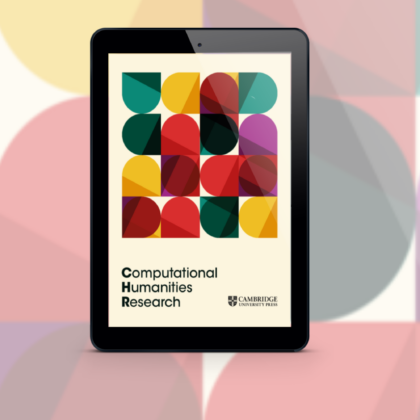Introducing the ‘Software Paper’: New ways to publish on research software in Computational Humanities Research
When Lauren Tilton first approached me about joining the Computational Humanities Research (CHR) journal’s Editorial Board as an Associate Editor, the thing that made the invitation so compelling and ultimately impossible to turn down was the journal’s interest in publishing Software Papers. Lauren offered me an opportunity to help shape and establish a Software Paper for this community, which would fall under my purview as Associate Editor for Open Science & Public Humanities. For those who have not yet had the pleasure of meeting Lauren, she is one of the two Editors-in-Chief for CHR, among many other roles. I had the pleasure of working with her previously when we were both on the Executive Council for ACH (Association for Computers and the Humanities). In addition to being a gifted researcher and leader, Lauren is also amazing at recruiting people and coming up with an ask that fits your strengths. Beware and be lucky to be her friend.
I recognize now that my career and network make me rather uniquely well-positioned to help establish and promote the Software Paper. I work at the Center for Digital Humanities at Princeton University as Lead Research Software Engineer, I’m a member of the DHTech steering committee, and I’ve been working in this space long enough to have connections to people who do technical work on digital and computation humanities research. I’m grateful for the opportunity to help shape the Software Paper as both an Editor and an author.
After I agreed to join as an Associate Editor and attended some initial editorial meetings, Lauren and I met to discuss what should be included in a Software Paper and drafted guidelines. Those were reviewed with key editorial team members and refined to the version posted now as part of the journal’s author instructions. We intentionally framed the scope of the Software Paper to be as wide as possible: there’s room to write about general purpose software designed for reuse as well as bespoke software that solves a problem for a specific project. There are insights to be gained from decisions, approaches, or clever solutions made in a particular context; even if the implementation is not reusable, the approach may be.
The Software Paper fills a gap for the computational and digital humanities communities: there are not many places to publish on research software, and existing venues have a narrow scope that excludes much of the work from this community. The CHR Software Paper is intended to be more capacious. If you want to write about software that can’t be shared publicly, or integrates with closed data, we will figure out how to make it work. Software can be at any stage, any size, and you can write about an entire package or focus on a particular aspect. If you think it’s worth writing about, your Software Paper will make the case for how your work is part of the CHR conversation on computational humanities methods and applications.
If you develop research software and are considering writing about it, please feel free to reach out to the CHR Editors at chr@cambridge.org






